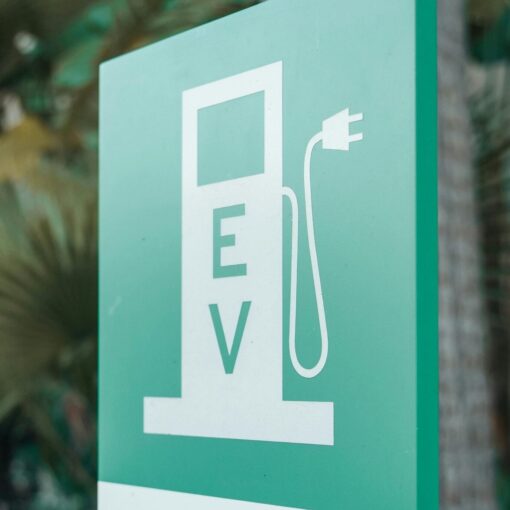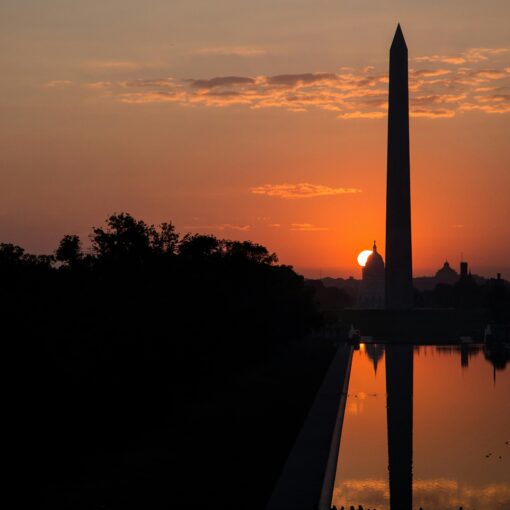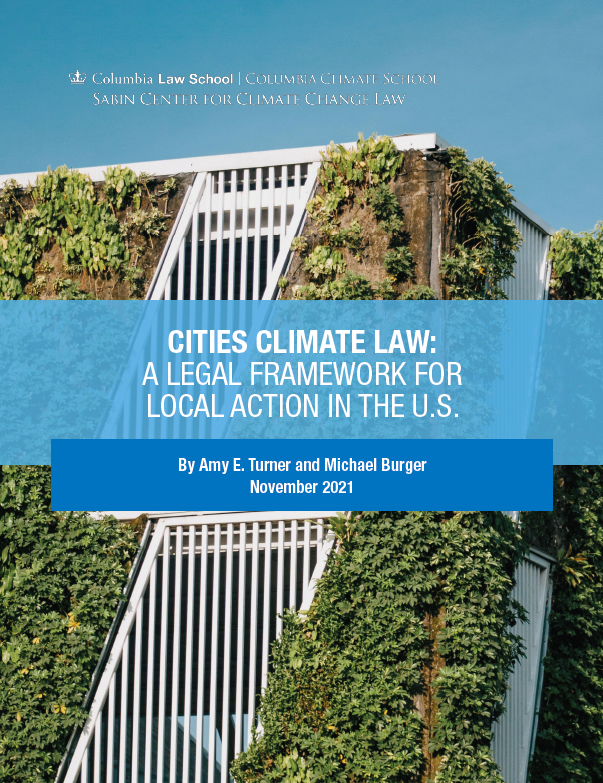 Yesterday, March 5, 2024, the U.S. Department of the Treasury (Treasury) and the Internal Revenue Service (IRS) released final regulations for their elective pay program, which allows many non-taxpayers, including local governments and their agencies and instrumentalities, to recoup the value of certain climate and clean energy tax credits as cash payments. Treasury and the IRS also released proposed regulations pertaining to partnerships and other forms of joint ownership for elective pay purposes. This blog post reviews developments in both the final and proposed regulations that are particularly pertinent to the use of elective pay by cities and other local governments.
Yesterday, March 5, 2024, the U.S. Department of the Treasury (Treasury) and the Internal Revenue Service (IRS) released final regulations for their elective pay program, which allows many non-taxpayers, including local governments and their agencies and instrumentalities, to recoup the value of certain climate and clean energy tax credits as cash payments. Treasury and the IRS also released proposed regulations pertaining to partnerships and other forms of joint ownership for elective pay purposes. This blog post reviews developments in both the final and proposed regulations that are particularly pertinent to the use of elective pay by cities and other local governments.
As described in an earlier blog post, elective pay (also informally referred to as “direct pay”) was enabled by the 2022 Inflation Reduction Act and is codified in Section 6417 of the Internal Revenue Code. It allows nontaxable entities to take advantage of twelve climate and clean energy tax credits by receiving the value of those credits as a cash payment from the IRS. While tax credits have long been used to spur investment in clean energy, they have historically been valuable only to entities with tax liability to offset, i.e., privately-owned businesses. Entities eligible to use elective pay include state, local and tribal governments; each of their agencies and instrumentalities; nonprofit organizations; and more. Local governments in particular are expected to make widespread use of tax credits to fund renewable energy development, electric vehicle charging infrastructure, and zero-emissions vehicles.
The final regulations adopted yesterday provide important clarity on several previously unresolved issues relating to elective pay implementation. As explained further below, regulations finalize and in some instances amend June 2023 proposed regulations on elective pay, which were discussed in an earlier blog post. The proposed regulations on partnerships, while not yet final, open the door to flexibility in ownership structure sought by many local governments. However, some topics are not covered by either rulemaking, including specifics relating to the “bonus credits” that can be added to the base Investment Tax Credit (ITC) or Production Tax Credit (PTC) for renewable energy investments. Many cities and other stakeholders have sought changes in rules or additional clarity regarding the domestic content bonus credit (which for claimants of elective pay can also erode the value of the base credit amounts), among other topics. This is not addressed in yesterday’s release but may be addressed in future rulemakings or guidance. The Treasury’s Summary of Contents and Explanation of Revisions accompanying the final rule also considers comments received during the public comment period and declines to make a number of changes to the 2023 proposed rule requested by commenters. For example, the final rules do not change the regulatory prohibition on transferability of elective pay-eligible credits under Section 6418 of the Internal Revenue Code (i.e., “chaining”), streamline the prefiling registration requirements, or “specify a particular time within which an elective payment election will be processed.”
The final regulations on elective pay are marked for publication in the Federal Register on March 11, 2024, and are to become effective 60 days after that. The proposed partnership regulations are also designated for publication on March 11, 2024, which will kick off a 60-day public comment period.
Final Regulations: Elective Payment of Applicable Credits
- The Fiscal Year “Hangover”: A significant source of uncertainty for local governments and other claimants of elective pay derives from an inconsistency in the text of the IRA and instructions from the IRS on how to file tax forms. The IRS instructions suggested that local governments – which have fiscal years but generally have not had “tax years” – should file a Form 990-T for any tax year beginning in or after 2023. The IRA makes projects put into service in or after calendar year 2023 eligible for elective pay, even if the entity’s fiscal year began in 2022. For many cities (and all states) in which the fiscal year does not match the calendar year, this could have meant that projects put into service in the early quarters of calendar year 2023 would be ineligible for elective pay. The final regulations address this inconsistency by allowing entities that do not make tax filings – cities, states, and many of their agencies and instrumentalities, but not nonprofit entities – to choose the start of their tax year. Moreover, an entity’s chosen tax year does not have to match its fiscal year, so long as the entity “maintains adequate books and records, including a reconciliation of any difference between its regular books of account and its chosen taxable year.” Once an entity, including a local government, chooses a taxable year it must continue to use that year unless it formally requests a change of annual accounting period from the IRS.
- Revised Tax Returns and Excessive Payments: The June 2023 proposed rules imposed administrative risk on cities in two notable ways. First, the proposed rules required that elective pay claimants make their elective pay elections correctly on their tax returns the first time, with no opportunity to amend or revise an elective pay claim later, nor to add or revoke an elective pay election to an already submitted tax filing. Second, it imposed a penalty of up to 20% for excessive payments of tax credits, meaning claiming and receiving a greater amount than allowed by the applicable credit (the penalty can be mitigated by a showing of “reasonable cause” for the excessive payment). For the most part, both of these limitations remain intact in the final rules, but with modifications. While the final rules still disallow new or revoked elective payment claims on amended tax returns (e.g., an elective payment claim omitted on a tax return cannot be added later), they allow that “a numerical error with respect to a properly claimed elective payment election may be corrected on an amended return or by filing an administrative adjustment request.” This effectively allows claimants to fix accidental claims for excessive payments; if they do so “before the IRS opens an examination” into the excessive payment, the penalties would not apply.
- Stacking with Grants and Forgivable Loans: The proposed rules had allowed elective pay claimants to combine elective payments for applicable tax credits with tax-exempt grants and forgivable loans in financing their investments, so long as the total amount received through these sources does not exceed the project basis (in non-tax language, the project’s cost). The final rule retains this so-called “stackability” principle but makes a few notable changes to how it operates. First, because only tax exempt grants “made for the specific purpose of purchasing, constructing, reconstructing, erecting, or otherwise acquiring an investment-related credit property” count against a project’s basis (in other words, these amounts are factored into the total project cost for purposes of determining whether a credit amount should be reduced), the final rules clarify that the determination of such a purpose is made at the time of the grant. Grants awarded after the acquisition or construction of a tax credit property are generally considered unrestricted, because other funds have already been expended on those project costs; these unrestricted grants do not count against a project’s basis. However, if such a grant “was perfunctory and the amount of the grant was virtually assured at the time of application,” the grant amount may be considered restricted and therefore count against the project’s basis. None of these final rule changes alter the basic role of stackability; they merely address the treatment of some grants and forgivable loans.
- Homeowners Associations: The proposed regulations defined “applicable entity” (i.e, an entity eligible to claim elective pay) in part as “[a]ny organization exempt from the tax imposed by subtitle A… [b]y reason of section 501(a) of the Code.” The final regulations amend this definition to” “[a]ny organization exempt from the tax imposed by subtitle A of the Code… [b]y reason of subchapter F of chapter 1 of subtitle A.” This change expands the range of nonprofit organizations eligible to claim elective pay, and in particular responds to comments received urging the IRS to allow homeowners associations to participate in the program. Thus, homeowners associations as defined under Section 528 of the Internal Revenue Code, including certain condominium management associations, residential real estate management associations, and timeshare associations, are eligible to use elective pay. While this change has no bearing on local governments’ use of elective pay, it does open up new avenues for tax credits to catalyze clean energy and clean transportation investment within a community. Local governments may wish to consider targeted outreach to homeowners associations about their possible eligibility for elective pay. Homeowners associations should take care to ensure they are among those that qualify to use elective pay, including consulting a qualified tax attorney.
Proposed Regulations: Partners and Partnerships
The final rules described above maintain the proposed rules’ general prohibition on partnerships claiming elective pay. However, the Treasury’s Summary of Contents and Explanation of Revisions accompanying the final rule consider several comments seeking clarity or flexibility on partnership or co-ownership arrangements, and concludes “that additional guidance is needed on joint ownership arrangements of applicable credit property that produce electricity that can be excluded from the application of subchapter K [(which allows partnerships to “elect out” of partnership status for tax purposes)].” Therefore, Treasury and the IRS also released proposed regulations on “Election to Exclude Certain Unincorporated Organizations Owned by Applicable Entities from Application of the Rules on Partners and Partnerships” (referred to below as the “proposed partnership regulations”).
The proposed partnership regulations would allow two broad joint ownership models under which a joint owner that individually qualifies for elective pay may claim elective pay for its ownership share of an eligible asset. First, a partnership, as defined by the Internal Revenue Code, may “elect out” of partnership tax treatment, and any partners that are eligible to file for elective pay for the project may do so with respect to their ownership share. Note that many forms of joint ownership will not qualify as “partnerships” for purposes of electing out. And second, the proposed rules would allow a pathway for owners of unincorporated organizations set up via a joint operating agreement “exclusively to produce electricity from its applicable credit property” to claim elective pay if they are individually eligible. To qualify, owners in such an arrangement must each maintain their right to their “pro rata shares of the electricity produced, extracted, or used, or any associated renewable energy credits.” Crucially, the proposed rules would change existing rules to allow the parties to enter into power purchase agreements with terms of more than one year, a critical limitation under previous rules.
The proposed partnership rules are complex and are not final. However, if finalized, the rules may allow for more creative, flexible, and advantageous structuring options for clean energy projects eligible for elective pay. For example, the rules would enhance local government (and municipal utility) flexibility to work with partners to develop more and larger renewable energy projects.
Local governments with particular interests or views on desirable partnership arrangements should consider participating in the public comment process. The public comment process will run for 60 days following the publication of the proposed rules in the Federal Register (scheduled for March 11, 2024). Comments may be submitted in writing, or commenters may request time to speak at a May 20, 2024 hearing.
Clarity to Move Forward; Open Questions Remain
The final elective pay rules offer needed clarity on a handful of topics, and for most elective payment filings by local governments, the guidance is sufficient to move forward. Local governments are free to choose the start and end dates of their tax years, meaning that projects put into service in early 2023 are eligible. For local governments considering co-ownership arrangements for energy generation or other credit-eligible assets, the final elective pay regulations and new proposed partnership regulations open the door to creative project structures. However, the proposed partnership rules are yet to be finalized, meaning that some uncertainty remains but that local government stakeholders can participate in the rulemaking’s public comment period. Of course, some open concerns are yet to be addressed, including worries that the domestic content penalty could stymie investment in renewable energy by local governments, other elective pay claimants, and the broader market. Still, the final rules signal a new phase in elective pay implementation, one in which local governments and other claimants have broader clarity around their eligible projects and how to file their paperwork. For eligible projects put into service in 2023, the time to file for elective pay has come.
Amy Turner is the Director of the Cities Climate Law Initiative at the Sabin Center for Climate Change Law at Columbia Law School.





